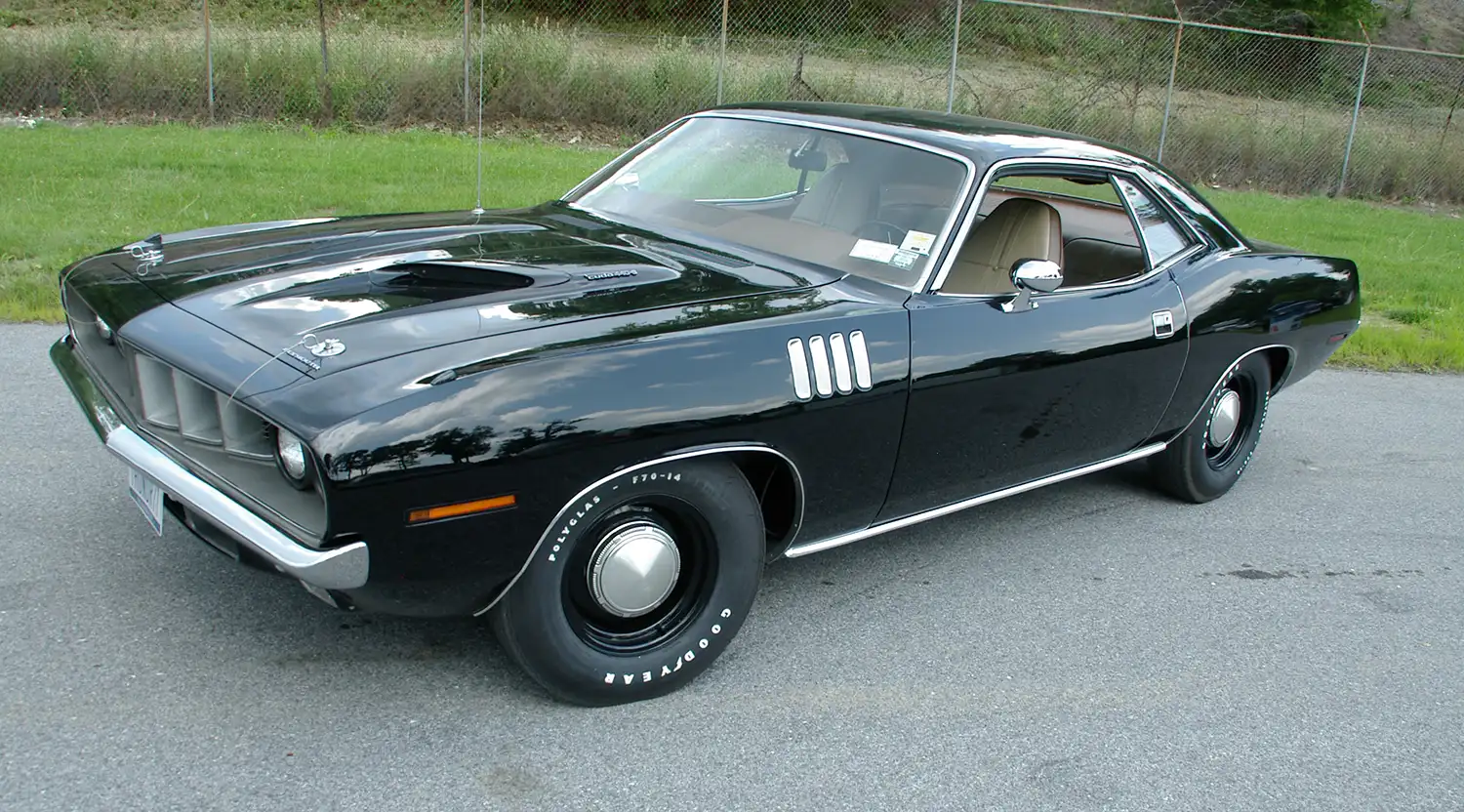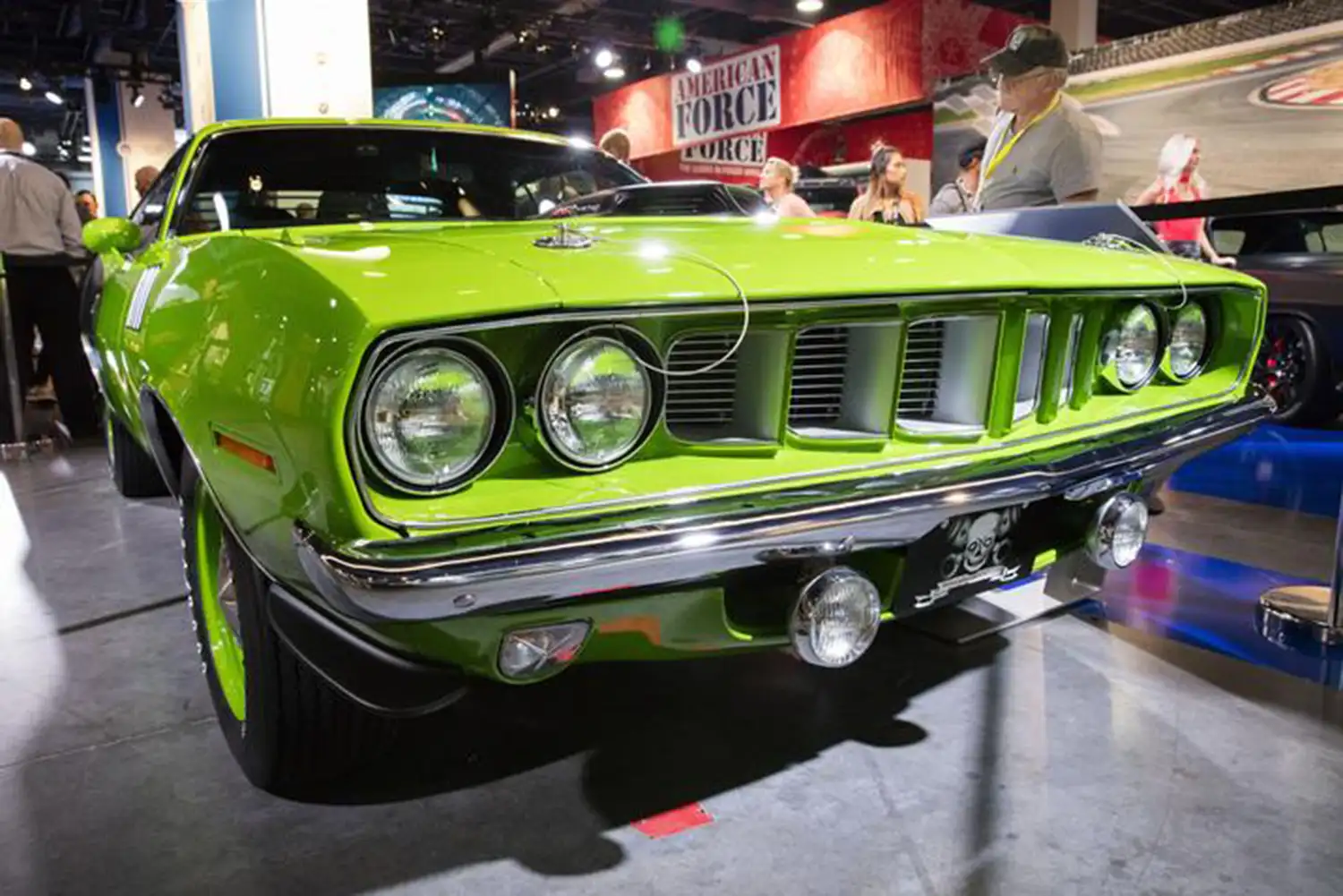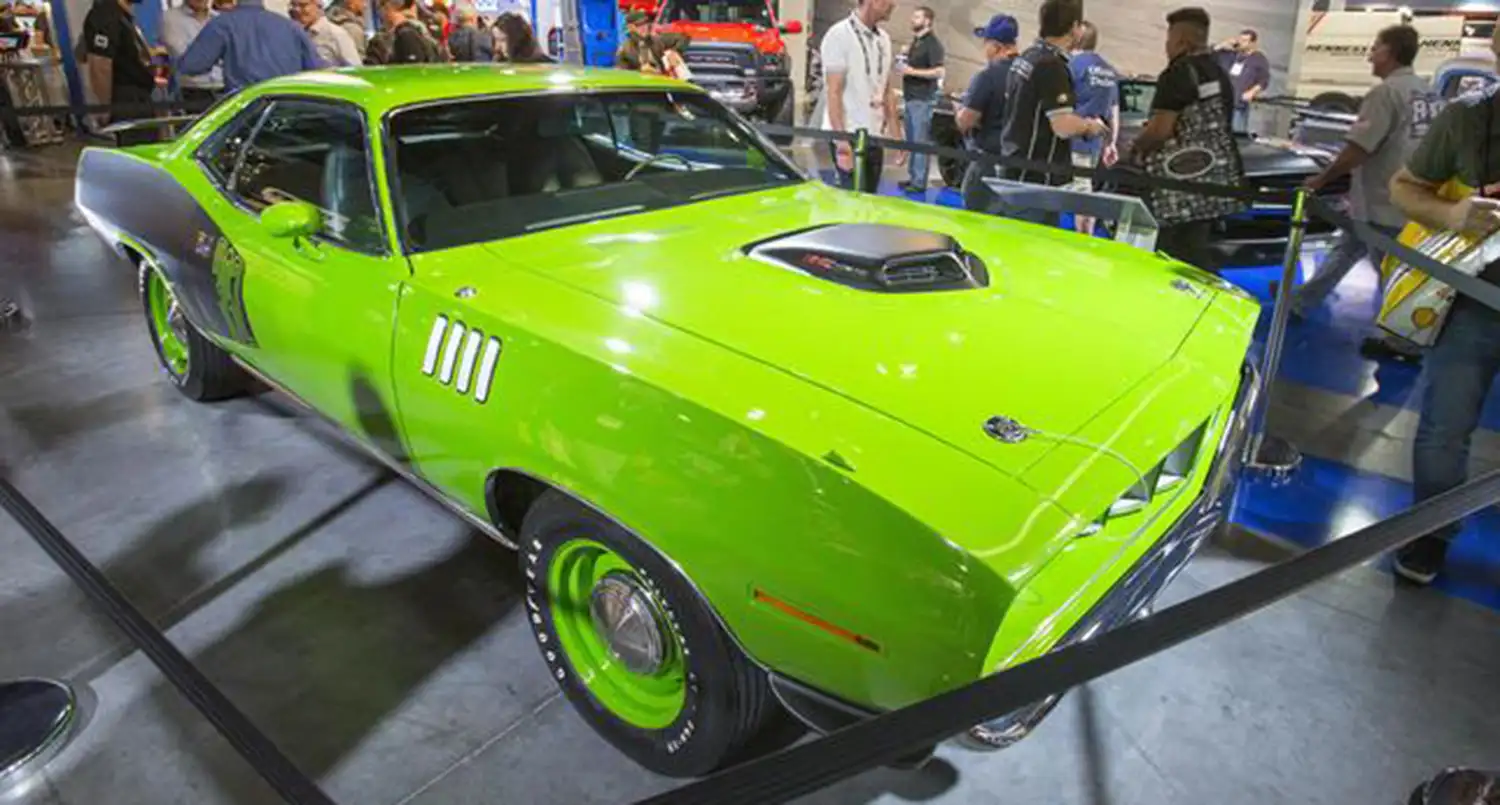
The 1971 Plymouth Cuda. Just hearing the name conjures images of raw power, aggressive styling, and a golden era of American muscle. But this wasn’t just another contender in a crowded field; the 1971 Plymouth Cuda carved out a unique space for itself. It became an instant icon, a symbol of unbridled performance and a design that was both menacing and beautiful. Let’s take a drive through the history and heritage that make the ’71 Cuda so special, exploring why it remains a coveted dream machine for enthusiasts around the globe.
The Birth of a Legend: From Barracuda to ‘Cuda
To truly understand the ’71 Cuda, we need to rewind a bit. The Barracuda nameplate first appeared in 1964. It was Plymouth’s sporty entry into the burgeoning pony car market. However, the early Barracudas, while stylish, shared their platform with the more pedestrian Valiant. The real shift came in 1970 with the introduction of the third-generation Barracuda. This new model finally had its own dedicated E-body platform, shared only with the Dodge Challenger. This meant designers and engineers had a clean slate to create something truly special, and boy, did they deliver.
1971: The Pinnacle of Cuda Design
Many enthusiasts consider the 1971 model year to be the pinnacle of Cuda design. The front-end received a distinct makeover with a bold, gaping grille and four headlights. The rear featured six individual taillights. The overall stance was lower and wider, exuding a more aggressive and purposeful look than its predecessors or the 1970 model. Furthermore, the fender “gills” or louvers, a design cue that became instantly recognizable, added another layer of visual drama. These design elements combined to create a car that was undeniably cool and instantly set it apart from the competition.

Power Under the Hood: Engine Options Galore
The ’71 Cuda wasn’t just about looks; it had the muscle to back up its menacing appearance. Buyers had a wide array of potent engine options to choose from. These ranged from the respectable 318 cubic inch V8 all the way up to the legendary Hemi 426. The Hemi, in particular, became the stuff of legend. It delivered a brutal amount of power and torque, making the ’71 Hemi Cuda one of the quickest and most sought-after muscle cars ever produced. Other notable engine choices included the 340 cubic inch small-block V8, known for its high-revving nature, and the various 440 cubic inch big-block options, offering a fantastic blend of power and drivability.
Performance that Defined an Era
With engines like those on offer, the performance of the 1971 Plymouth Cuda was nothing short of breathtaking for its time. A well-equipped Cuda could devour the quarter mile in impressive times. The sheer acceleration and the unmistakable roar of those big V8s created an experience that was both visceral and exhilarating. It wasn’t just about straight-line speed either. The E-body platform provided better handling capabilities compared to earlier Barracudas. This made the ’71 Cuda a more well-rounded performance machine. It could hold its own on winding roads as well as on the drag strip.
Iconic Features and Options
Beyond the core design and engine choices, the ’71 Cuda offered a plethora of cool features and options that further cemented its iconic status. The shaker hood, with its exposed air cleaner that vibrated with the engine’s movements, was a particularly popular and visually striking option. High-impact paint colors with names like “Plum Crazy,” “Sassy Grass Green,” and “Tor Red” added to the car’s flamboyant personality. Interior options included high-back bucket seats and a variety of gauge packages that catered to the serious driver. These details allowed buyers to personalize their Cudas and further enhance their unique appeal.

Cultural Impact and Enduring Legacy
The 1971 Plymouth Cuda quickly transcended its status as just a car. It became a cultural icon. It appeared in movies and television shows, further solidifying its place in the American consciousness. Its aggressive looks and powerful presence perfectly embodied the spirit of the era. Even today, the ’71 Cuda remains a highly sought-after collector car. Prices for well-preserved or restored examples, especially those equipped with the Hemi engine, can reach astronomical figures. Its enduring popularity is a testament to its timeless design, potent performance, and the indelible mark it left on automotive history.
The Rarity Factor
Adding to the mystique of the 1971 Cuda is the fact that it was produced for a relatively short period and in limited numbers, especially the higher-performance variants. Changing emissions regulations and rising insurance costs contributed to the decline of the muscle car era. This makes the ’71 Cuda even more special and desirable for collectors. Owning one is not just about having a classic car; it’s about owning a piece of automotive history, a tangible reminder of a time when power and style reigned supreme.
Summary
The 1971 Plymouth Cuda stands as a true automotive icon. Its distinctive and aggressive design, combined with a range of powerful engine options, cemented its place in muscle car history. From its unique front and rear styling to the availability of legendary engines like the Hemi, the ’71 Cuda was a statement of power and individuality. Its cultural impact and enduring legacy continue to make it a highly coveted and celebrated vehicle. The 1971 Plymouth Cuda wasn’t just a car; it was the embodiment of an era.
Disclaimer: This article provides historical information about the 1971 Plymouth Cuda and should not be considered investment advice. Values of classic cars can fluctuate.
